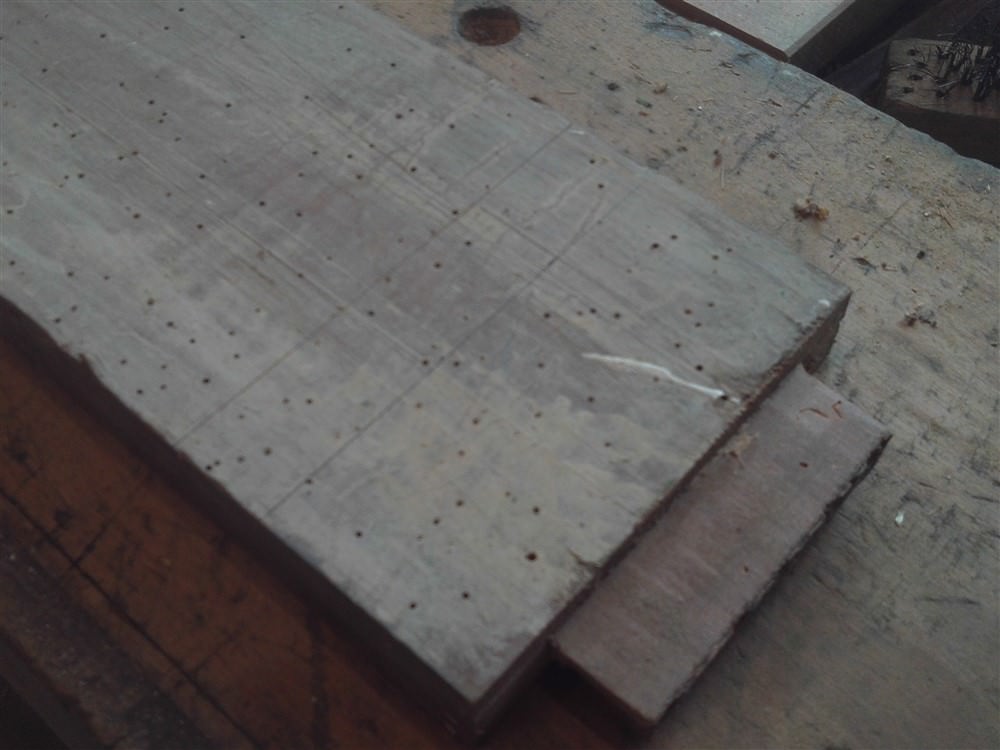MikeG.
Established Member
Literally.
We were looking around an old farm shed with a farmer friend of ours a few days ago (trying to find a gate.....another story), when we stumbled across an old washstand. It was covered in rubbish, and in a parlous state, but it went straight in the back of the van. Here it is in all its glory:

Now, I'm thinking early 20th century. Edwardian, late Victorian. I'm no expert, so what do you reckon? The brass drawer handle gives something of a clue:

It's walnut. Well, unless you guys tell me otherwise:


It's been slathered in 2 different colours of green paint, has some whitewash on it, and it was stripped in caustic soda about 30 years ago. Only a couple of the glue joints haven't failed. Unfortunately, it was riddled with woodworm, including plenty of active ones. I've sloshed some anti-worm jollop over it a couple of times, but this damage means that there is no point trying to restore it. Oh, and here's the point: this is going to go in our bathroom, and serve its original purpose. We have the original marble top.
It's got a bit of a structural issue or two:


So, can anyone help me with the date? And what would you do with it?
We were looking around an old farm shed with a farmer friend of ours a few days ago (trying to find a gate.....another story), when we stumbled across an old washstand. It was covered in rubbish, and in a parlous state, but it went straight in the back of the van. Here it is in all its glory:

Now, I'm thinking early 20th century. Edwardian, late Victorian. I'm no expert, so what do you reckon? The brass drawer handle gives something of a clue:

It's walnut. Well, unless you guys tell me otherwise:


It's been slathered in 2 different colours of green paint, has some whitewash on it, and it was stripped in caustic soda about 30 years ago. Only a couple of the glue joints haven't failed. Unfortunately, it was riddled with woodworm, including plenty of active ones. I've sloshed some anti-worm jollop over it a couple of times, but this damage means that there is no point trying to restore it. Oh, and here's the point: this is going to go in our bathroom, and serve its original purpose. We have the original marble top.
It's got a bit of a structural issue or two:


So, can anyone help me with the date? And what would you do with it?






















































